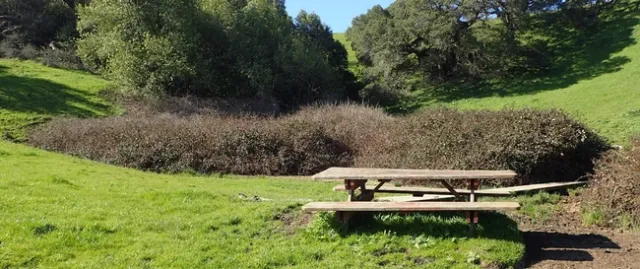There's no telling what passes through a Master Gardener's mind as they meditate while working in the garden. The other day it occurred to me out of the blue that I didn't know the difference between a boysenberry, a loganberry, an olallieberry, a marionberry, or a blackberry, even though I go blackberrying every year and have been ordering all five off of pie menus all my life. Well, it turns out that the first four are all hybrids or cultivars of the garden blackberry Rubus fruticosus L., each with its own story. Our most abundant wild blackberry has a story too.

It's no wonder I was confused: the taxonomy of genus Rubus (family Rosaceae) is a mess because of hybridization and apomixis--the production of seeds that develop without fertilization, which is common in the rose family. Apomixis enables breeders to multiply desirable blackberry hybrids and cultivars quickly and cheaply. The approximately 168 species in subgenus Rubus and their many cultivars are sometimes referred to simply as “the Rubus fruticosus aggregate.”
American berry breeders are responsible for most of what confused me. In 1880, a Santa Cruz, California judge and amateur horticulturalist named James Harvey Logan developed a deep red-colored blackberry-raspberry cross called the loganberry. The United States Department of Agriculture (USDA) berry breeding program at Oregon State University crossed the loganberry with a complex hybrid of other berries in the 1930s to produce ‘Olallie,' commonly called the olallieberry. “Olallie” means “berry” in the Chinook language--Olallie Lake in Oregon's Cascade Range is surrounded by an abundance of berries. Then those USDA breeders crossed the olallieberry with another blackberry cultivar to produce ‘Marion,' named after the county where it was tested extensively, and marketed since 1956 as marionberry. Marionberry dominates blackberry production in Oregon, the top blackberry-growing U.S. state.
Meanwhile, in the late 1920s, a USDA berry breeder enlisted the help of Walter Knott, an expert California berry farmer, to find a large, hybrid reddish-purple berry that had been grown on the Anaheim farm of Rudolph Boysen, who had since quit farming and sold his property. They managed to recover a few distressed vines from a weed-choked field. Knott nursed the vines back to health on his Buena Park farm and started to cultivate the berry commercially, calling it boysenberry. The rest—Knott's Berry Farm and its famous preserves—is history. Cultivars that are easier to grow and less prone to fungus diseases and shipping damage have largely replaced boysenberries on the commercial fresh fruit market, but small-scale growers still produce them for sale in farm stands and local markets.
I have a problem with commercially-grown fresh blackberries that I find in the supermarket: when they have much taste at all, they are not tasty. No, my allegiance is to wild blackberries and to my favorite dessert, the delicious pies they make! The sweet, fragrant California blackberry Rubus ursinus is native to the western United States, but chances are that you and I berry in large, impenetrable thickets of the invasive Himalayan blackberry, Rubus armeniacus. R. armeniacus tastes so good that Luther Burbank imported the Armenian native to the U.S. east coast in 1885. This blackberry promptly spread out of control, colonizing disturbed sites such as railroad corridors, roadsides, fence lines, recently burned areas, and streams and wetlands that are prone to flooding. It reached California by 1945 and is considered a noxious weed.
Some exotic invasive weeds are not all bad, though, are they? Here is how to tell whether your favorite wild blackberry patch is native or exotic: both species have 3 or 5 leaflets per compound leaf, but California blackberry is a smaller plant (reaching 6 ft high), with round stems, generally three leaflets per leaf, and many relatively small, slender spines; Himalayan blackberry stems grow up to 12 ft high and 30 ft long, and are angular and furrowed, with three or five leaflets per leaf (varying with age of the stem) and stout thorns with wide bases.
Whatever you pick--enjoy!

